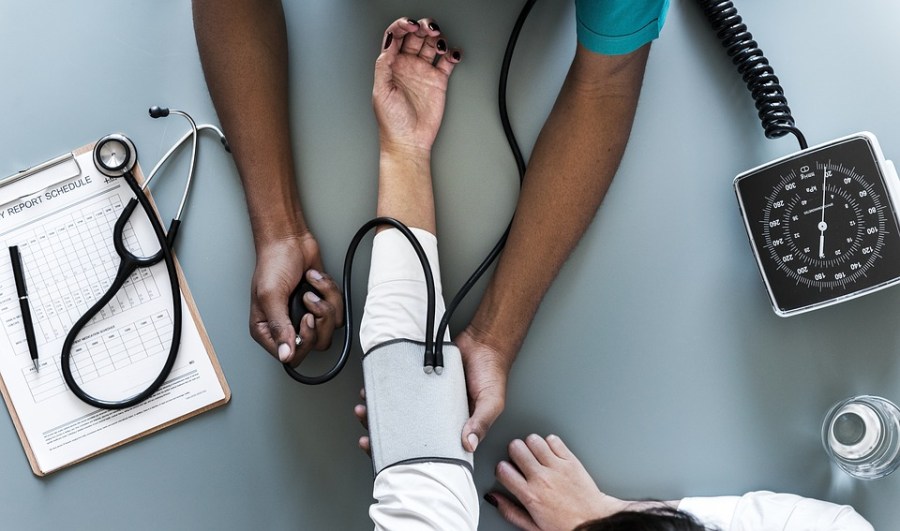Does Cold Water Draw Out the Blood

According to the Center for Disease Control (CDC) there are approximately 75 million American adults (32%) who have high blood pressure. However, only half of those actually have the condition under control. In 2014, high blood pressure was either the primary or contributing cause of death in over 410,000 Americans. But what exactly creates high blood pressure? The level of blood pressure depends on the amount of blood that is being pumped by the heart and the amount of resistance of blood flow to the arteries. The narrower the arteries, combined with a high level of blood flow, will result in a higher blood pressure. Here is an overview on how to read blood pressure numbers, the cause and symptoms associated with abnormal levels and the treatments and preventative steps that should be started if this currently is or could potentially be an issue.
Age Range
Blood pressure is something that should be regularly looked at during your check-ups with your healthcare provider. Those that are 40 or older or are aged 18-39 and have a high risk of high blood pressure, should have this checked more often. If you don't have a regular doctor whom you meet with annually, visit one of the local pharmacies where they may have a machine that allows you to check your blood pressure for free. Health resource fairs are also another option of where you can get free blood pressure screenings. But once you have your blood pressure numbers, you need to understand what they mean..
There are four main categories that people's blood pressure will fall into. The first is the normal category which is ideal. The top (systolic) number represents the amount of force that is exerted as the heart contracts and pumps blood. The bottom (diastolic) number is the amount of force exerted in between the contractions. If the numbers are around 120/80mm Hg, this would be a good blood pressure reading.
The second category is elevated blood pressure when the systolic number is between 120-129 and diastolic number is 80mm Hg. Then there is the stage 1 high blood pressure (hypertension) which is a systolic number between 130-139mm Hg and diastolic number between 80-89mm Hg. And lastly, the stage two high blood pressure (hypertension) with systolic numbers of 140mm Hg or higher and diastolic numbers 90 or higher.
Having said that, there are instances when the blood pressure can actually be too low and can lead to dizziness, fainting, blurred vision, fatigue and nausea. Blood pressure levels that are 90mm Hg systolic or 60mm Hg diastolic are considered low blood pressure. The seriousness of this though can range from just being dehydrated to needing serious medical attention.
Causes
There are many factors that can play a role in causing high blood pressure in individuals. Some factors include obesity, lack of exercise, excess drinking or tobacco use or family genes. Those that intake too much sodium (salt) and not enough Potassium and Vitamin D are also increasing their risk of high blood pressure. And of course, there are factors such as age, race and stress levels that play an important role in one's blood pressure.
Unfortunately though, there are many that have hypertension but do not realize it as it has developed over many years and by the time the symptoms appear, it is often too late.
Symptoms
While there are a few signs that can be associated with high blood pressure, they are rarely ever solely caused by it. These symptoms could be facial flushing when blood vessels in the face are dilated, which can be caused by stress, exposure to heat or hot water or due to consuming too much alcohol. Another sign may be headaches, nosebleeds or dizziness, but again there may be other factors playing a role such as side effects from blood pressure medication or due to another health issues such as diabetes.
Because there aren't any clear signs, high blood pressure is also known as a "silent killer". But by having regular check-ups with a healthcare provider, they should be able to identify any damage done to the blood vessels or heart. If it goes undetected though, it can lead to heart issues such as a heart attack or stroke.
Treatment
Learning how to treat low and high blood pressure is extremely important. They are both done by adopting a healthy lifestyle that consists of a balanced diet that is low in salt complimented with regular exercise. It is also recommended to work closely with your doctor who can also show you how to regularly monitor your blood pressure at home. While there is no cure for high blood pressure, these steps will greatly contribute to the quality of life and reduce the potential for future heart disease, stroke and kidney disease. Some healthcare providers will also prescribe high blood pressure medication.
There are some who claim that certain herbs help reduce blood pressure but it is highly recommended to consult with your doctor first as some herbs can have strong side effects if taken in too high of a quantity. Currently, there are no high blood pressure specialists that regularly recommend taking herbs to lower your blood pressure.
MORE FROM LIFE123.COM
Does Cold Water Draw Out the Blood
Source: https://www.life123.com/article/get-to-know-your-blood-pressure?utm_content=params%3Ao%3D740009%26ad%3DdirN%26qo%3DserpIndex
0 Response to "Does Cold Water Draw Out the Blood"
Post a Comment